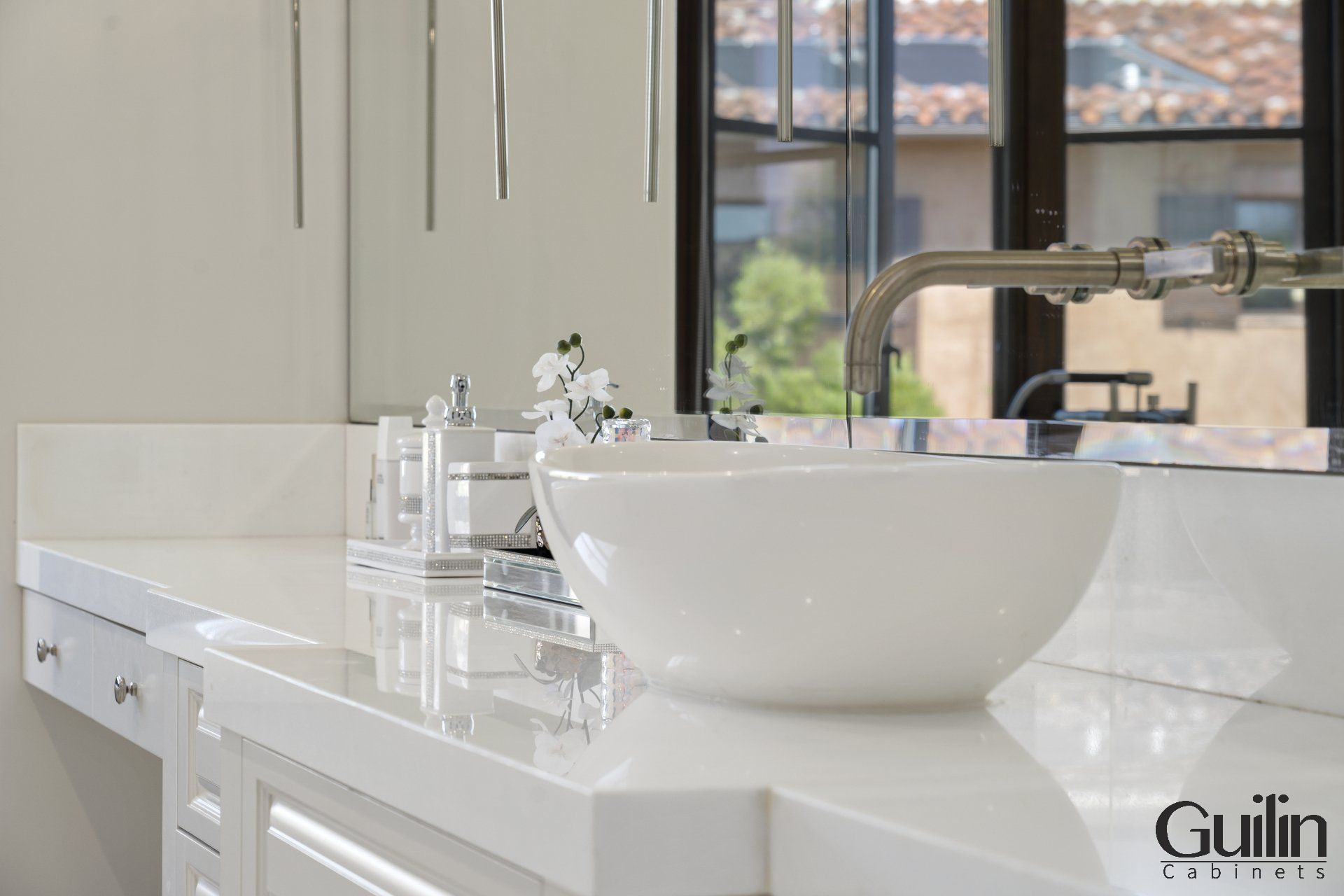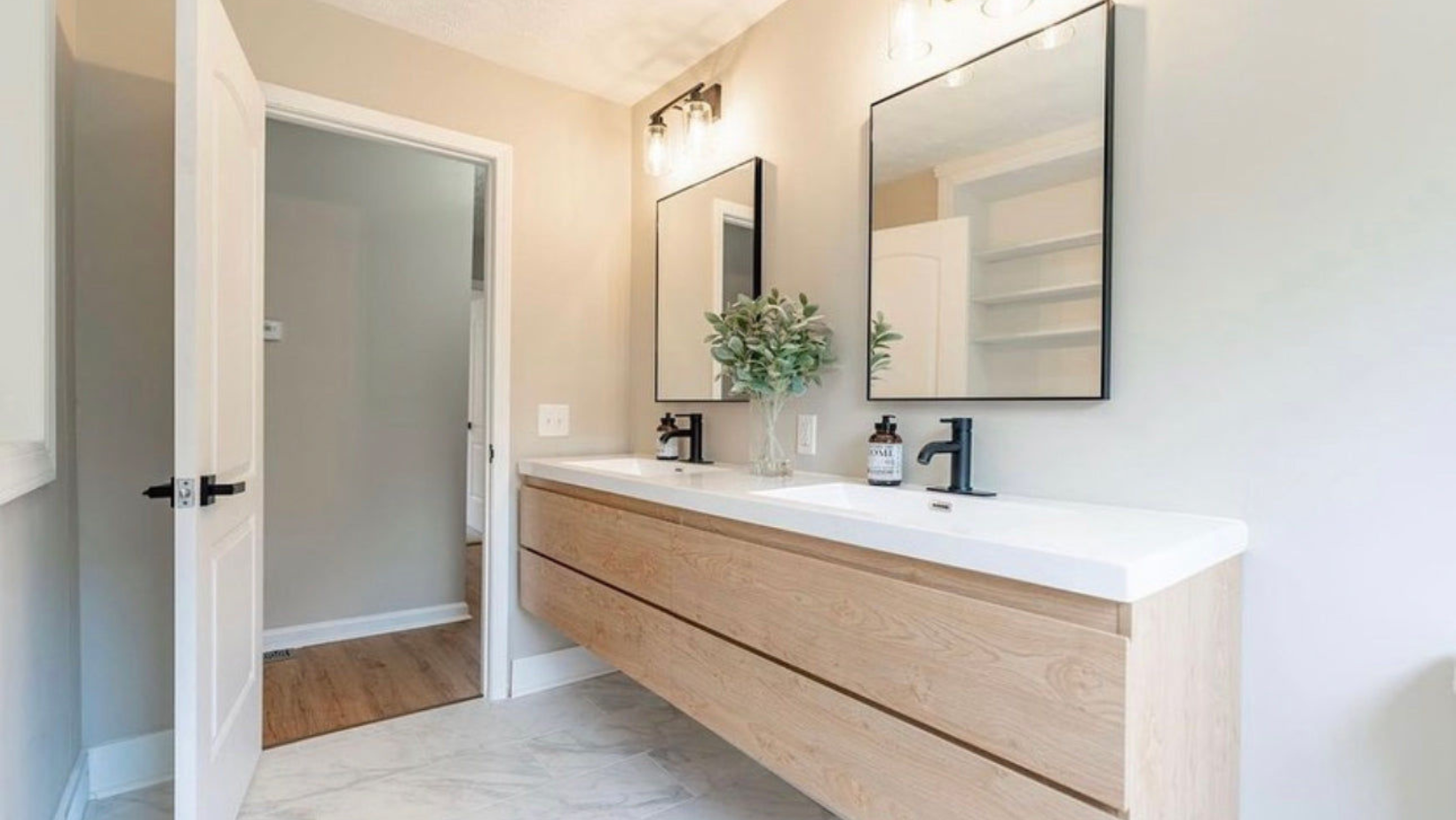Rustic Bathroom Vanity Base Styles

A rustic bathroom vanity base can add a touch of warmth and character to your bathroom. It can also be a great way to showcase your unique style. There are many different rustic bathroom vanity base styles to choose from, each with its own unique look and feel.
Popular Rustic Bathroom Vanity Base Styles
Rustic bathroom vanity base styles are often defined by their use of natural materials, distressed finishes, and simple designs. Here are some of the most popular styles:
- Farmhouse
- Industrial
- Reclaimed Wood
Farmhouse
Farmhouse style bathroom vanities are characterized by their simple, functional designs and use of natural materials. They often feature distressed wood finishes, metal accents, and open shelving. These vanities are perfect for creating a cozy and inviting atmosphere in your bathroom.
- Distressed wood finishes
- Metal accents
- Open shelving
Industrial
Industrial style bathroom vanities are characterized by their use of raw materials, exposed metal, and industrial-inspired hardware. They often feature distressed wood finishes, metal piping, and exposed brick. These vanities are perfect for creating a modern and edgy look in your bathroom.
- Raw materials
- Exposed metal
- Industrial-inspired hardware
Reclaimed Wood
Reclaimed wood bathroom vanities are made from wood that has been salvaged from old buildings or structures. This wood often has unique characteristics, such as knots, cracks, and color variations. Reclaimed wood vanities are perfect for creating a unique and eco-friendly look in your bathroom.
- Unique characteristics
- Eco-friendly
- Rustic charm
Materials Used for Rustic Bathroom Vanity Bases
Rustic bathroom vanity bases are typically made from natural materials, such as wood, metal, and stone.
- Wood: The most common material for rustic bathroom vanity bases is wood. It can be used in a variety of styles, from farmhouse to industrial. Common types of wood used for rustic bathroom vanity bases include oak, pine, and reclaimed wood.
- Metal: Metal is often used for accents and hardware on rustic bathroom vanity bases. It can be used to create a farmhouse, industrial, or modern look. Common types of metal used for rustic bathroom vanity bases include iron, steel, and copper.
- Stone: Stone is a durable and elegant material that can be used for rustic bathroom vanity bases. It is often used for countertops and sinks. Common types of stone used for rustic bathroom vanity bases include granite, marble, and slate.
Rustic Bathroom Vanity Base Styles: A Summary
| Style | Materials | Characteristics | Examples |
|---|---|---|---|
| Farmhouse | Distressed wood, metal accents, open shelving | Simple, functional design, cozy and inviting atmosphere | A vanity with a distressed wood finish, metal hardware, and open shelving |
| Industrial | Raw materials, exposed metal, industrial-inspired hardware | Modern and edgy look, use of raw materials, exposed metal | A vanity with a metal frame, exposed piping, and industrial-inspired hardware |
| Reclaimed Wood | Reclaimed wood, unique characteristics, eco-friendly | Unique and eco-friendly look, use of salvaged wood | A vanity made from reclaimed wood with knots, cracks, and color variations |
Choosing the Right Rustic Bathroom Vanity Base

Selecting the perfect rustic bathroom vanity base is an exciting step in your bathroom renovation journey. It’s a chance to infuse your space with character and charm while ensuring functionality and style. This decision involves careful consideration of several key factors.
Factors to Consider When Choosing a Rustic Bathroom Vanity Base
Choosing the right rustic bathroom vanity base involves careful consideration of several factors, ensuring a perfect fit for your bathroom’s style, functionality, and budget.
- Size: The size of your bathroom vanity base is crucial. Measure your available space carefully, considering the width, depth, and height. A vanity that’s too large will feel cramped, while a vanity that’s too small might not provide adequate storage. Consider the size of your bathroom fixtures, such as the sink and mirror, and ensure the vanity complements them.
- Functionality: Think about your storage needs. Do you require ample drawer space, open shelving, or a combination of both? Consider the number of drawers, their size, and the overall organization offered by the vanity.
- Budget: Rustic bathroom vanity bases come in a wide range of prices, depending on the materials used, the craftsmanship, and the brand. Set a realistic budget before you start shopping to avoid overspending.
- Style: Rustic bathroom vanity bases come in various styles, from farmhouse chic to industrial rustic. Choose a style that complements the overall aesthetic of your bathroom.
Integrating a Rustic Bathroom Vanity Base into Different Bathroom Styles
A rustic bathroom vanity base can be seamlessly integrated into a variety of bathroom styles, adding a touch of warmth and character.
- Farmhouse: A rustic bathroom vanity base with distressed wood, open shelving, and metal accents will complement a farmhouse bathroom style. Pair it with white subway tile, vintage fixtures, and natural fiber rugs.
- Industrial: For an industrial bathroom, choose a rustic vanity base with reclaimed wood, metal accents, and a raw, unfinished look. Pair it with exposed brick walls, concrete floors, and vintage lighting.
- Traditional: A rustic bathroom vanity base can also work in a traditional bathroom, adding a touch of warmth and texture. Choose a vanity with a more polished finish and intricate details, and pair it with classic fixtures and muted color palettes.
Considering Existing Bathroom Fixtures and Decor
The existing fixtures and decor in your bathroom play a vital role in choosing the right rustic bathroom vanity base.
- Fixtures: The style and finish of your bathroom fixtures, such as the sink, faucet, and lighting, should complement the vanity base. For example, a rustic vanity base with a weathered wood finish would pair well with a vintage-style faucet and oil-rubbed bronze hardware.
- Decor: The overall decor of your bathroom, including the color palette, wall coverings, and accessories, should also be considered. A rustic vanity base with a natural wood finish would complement a bathroom with warm tones, natural textures, and earthy accents.
Decision-Making Process Flowchart for Choosing a Rustic Bathroom Vanity Base
A flowchart can help visualize the decision-making process for choosing a rustic bathroom vanity base.
- Step 1: Define your needs: Determine the size, functionality, and budget you require for your bathroom vanity base.
- Step 2: Consider your bathroom style: Identify the overall style of your bathroom and choose a vanity base that complements it.
- Step 3: Assess existing fixtures and decor: Ensure the vanity base complements the existing fixtures and decor in your bathroom.
- Step 4: Research and compare options: Explore different rustic bathroom vanity bases, considering materials, styles, and prices.
- Step 5: Make your choice: Select the rustic bathroom vanity base that best meets your needs and preferences.
DIY Rustic Bathroom Vanity Base Projects
Creating a rustic bathroom vanity base from reclaimed wood is a rewarding project that allows you to personalize your bathroom and give it a unique, handcrafted touch. This DIY project combines the charm of rustic aesthetics with the satisfaction of building something yourself.
Building a Simple Rustic Bathroom Vanity Base
Building a rustic bathroom vanity base using reclaimed wood involves several steps. Here’s a comprehensive guide to help you create your own:
Materials Needed
- Reclaimed wood planks: Choose wood with interesting knots and grain patterns for a rustic look.
- Wood glue
- Wood screws
- Screwdriver or drill
- Measuring tape
- Level
- Saw (circular or hand saw)
- Sandpaper (various grits)
- Wood stain (optional)
- Polyurethane sealant (optional)
Step-by-Step Guide
- Plan and Measure: Determine the desired dimensions of your vanity base. Consider the size of your sink and the available space in your bathroom. Measure and cut the reclaimed wood planks to the required lengths.
- Assemble the Frame: Use wood glue and screws to assemble the frame of the vanity base. You can create a simple rectangular frame or add decorative elements like angled legs for a more rustic look.
- Attach the Top: Once the frame is assembled, attach the top of the vanity base. This can be a single piece of reclaimed wood or multiple planks joined together. Ensure the top is level and secure.
- Sand and Finish: Sand the entire vanity base to smooth out any rough edges and create a uniform surface. You can choose to stain the wood for a darker finish or leave it natural for a more rustic look. Apply a sealant like polyurethane to protect the wood from moisture and spills.
Creating a Distressed or Weathered Finish
To achieve a distressed or weathered look on your rustic vanity base, consider these techniques:
- Sanding: Use sandpaper with varying grits to create uneven wear patterns. Start with coarser grits to remove layers of wood and create deeper grooves, then use finer grits to smooth out the surface.
- Hammering: Gently hammer the wood surface with a nail or small hammer to create dents and indentations. This technique adds a realistic distressed look.
- Paint: Apply a thin layer of paint and then partially remove it with sandpaper or a wire brush to expose the underlying wood. This creates a layered effect and adds depth to the finish.
